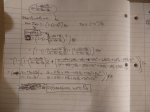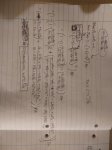gabrielwong1991
New member
- Joined
- Jan 18, 2015
- Messages
- 9
Hi guys... I have this equation need to solve which differentiate this pi-A with respect to Pa... I dont know how to proceed after breaking the brackets.. It involves fraction and so many variables and seems to have chain rule and product rules in it...
Could somebody give me some hints on how to differentiate this?

The answer will be dPi-A/dPA =0 ==> PA=8+2pB-pB2/14-5pB ....
Could somebody give me some hints on how to differentiate this?

The answer will be dPi-A/dPA =0 ==> PA=8+2pB-pB2/14-5pB ....
Attachments
Last edited:

